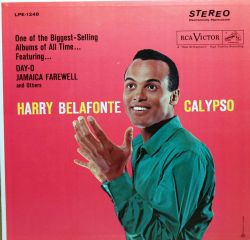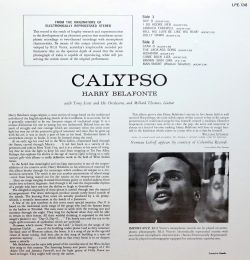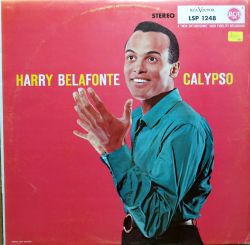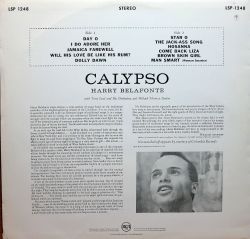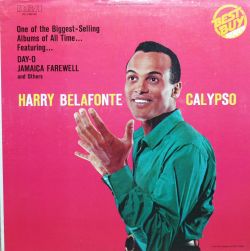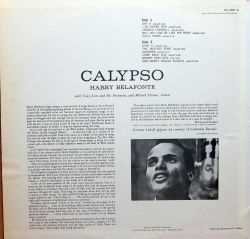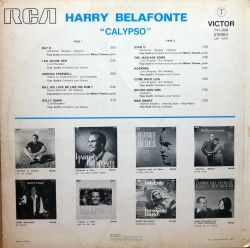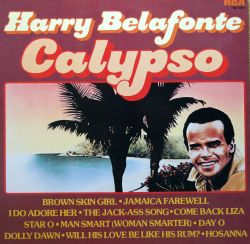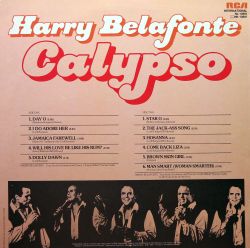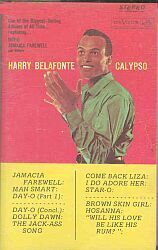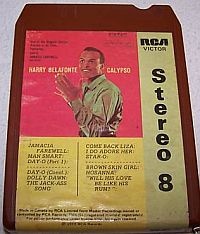|
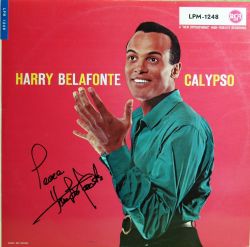
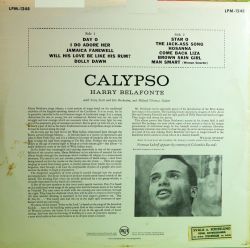 |
LP mono: RCA LPM1248
LP pseudostereo: RCA LPE1248
LP stereo (?!): RCA LSP1248
LP RCA AYL1-3801
LP RCA 741.006
France
LP RCA NL13801
The Netherlands
LP RCA CL83801 Italy
LP
Victor SHP5095 Japan
LP
Victor RCA5119
LP
Victor LS550 10"
LP
RCA A10V-0102 10"
LP
RCA RD27107 UK
LP
RCA L10244 Australia
MC RCA PK-1982 Canada
MC RCA NK-13801 The Netherlands
Stereo8 RCA P8S-1982
Reel to reel RCA BP48
EP: RCA EPB1248
CD BMG 7863-53801-2
All songs are also on
the album BCD16262
and on the CD box
RGMCD006 |
Released in 1956.
Tony Scott and
His Orchestra (A2, A3, A5, B3-B6)
Millard Thomas , Guitar (A1, A4,
B1-B2)
The Norman Luboff Choir (B3-B5)
Producers: Ed Welker, Herman Diaz Jr.,
Henri René (B6)
Conductor: Tony Scott
Musicians : Irving Burgie,
Frantz Casseus
Chorus Leader: Broc Peters
Recorded at
Webster Hall
Aug 18, Oct 20 and Nov 9, 1955
Cover Photo: Roy Stevens
Liner-notes:
William Attaway. |
|
This is the album that made Harry Belafonte's career. Up to
this point, calypso had only been a part of Belafonte's focus in his
recordings of folk music styles. But with this landmark album, calypso not
only became tattooed to
Belafonte permanently, it had a revolutionary effect on folk music in
the 1950s and 60s. The album consists of songs from Trinidad, mostly written
by West Indian songwriter Irving Burgie (aka "Lord Burgess"). Burgie's two
most successful songs are included: "Day O" and "Jamaica Farewell" (which
were both hit singles for
Belafonte), as are the evocative ballads "I Do Adore Her" and "Come Back
Liza" and what could be the first feminist folk song, "Man Smart (Woman
Smarter)."
Calypso became the first million-selling album by a single artist,
spending an incredible 31 weeks at the top of the Billboard album charts,
remaining on the charts for 99 weeks. It triggered a veritable tidal wave of
imitators, parodists, and artists wishing to capitalize on its success.
Years later, it remains a record of inestimable influence, inspiring many
folk singers and groups to perform, most notably the
Kingston Trio, which
was named for the Jamaican capital. For a decade, just about every folk
singer and folk group featured in their repertoire at least one song that
was of West Indian origin or one that had a calypso beat. They all can be
attributed to this one remarkable album.
Despite the success of
Calypso,
Harry Belafonte refused to be typecast. Resisting the impulse to record
an immediate follow-up album,
Belafonte instead spaced his calypso albums apart, releasing them at
five-year intervals in 1961, 1966, and 1971.
~ Cary Ginell, All Music Guide |


